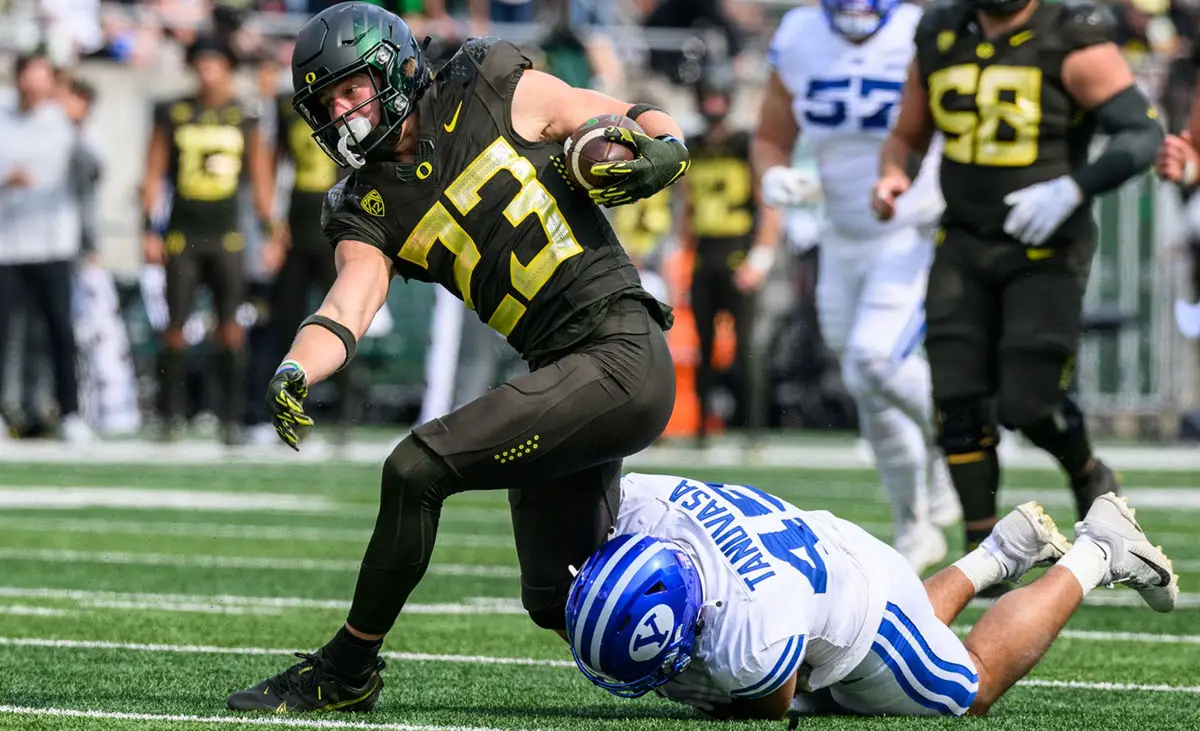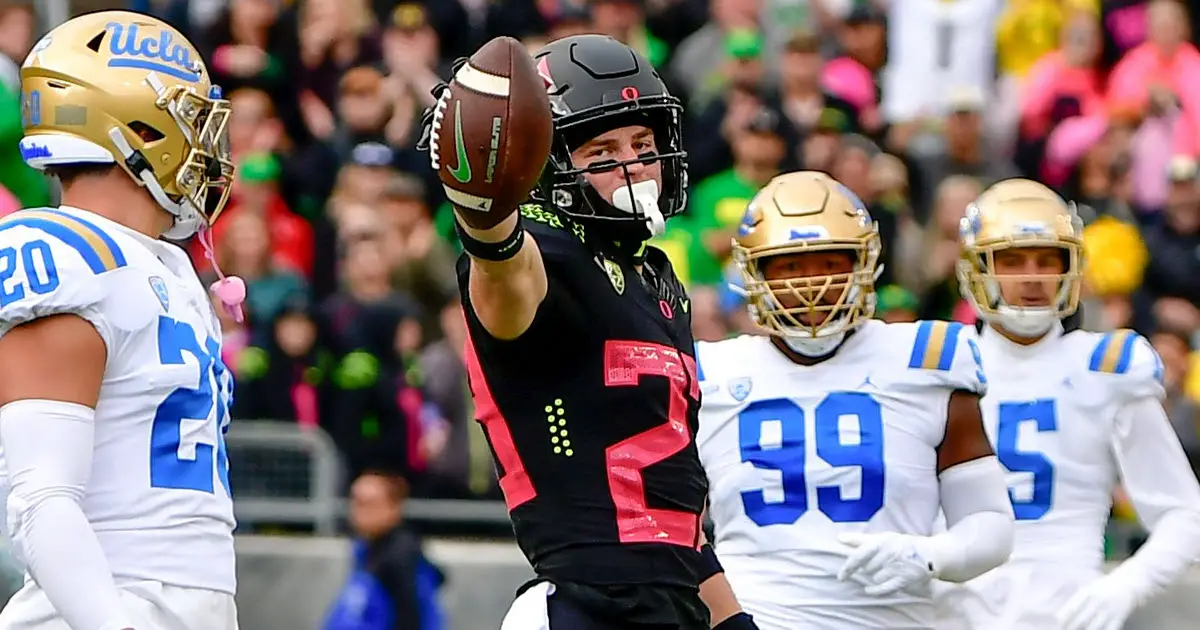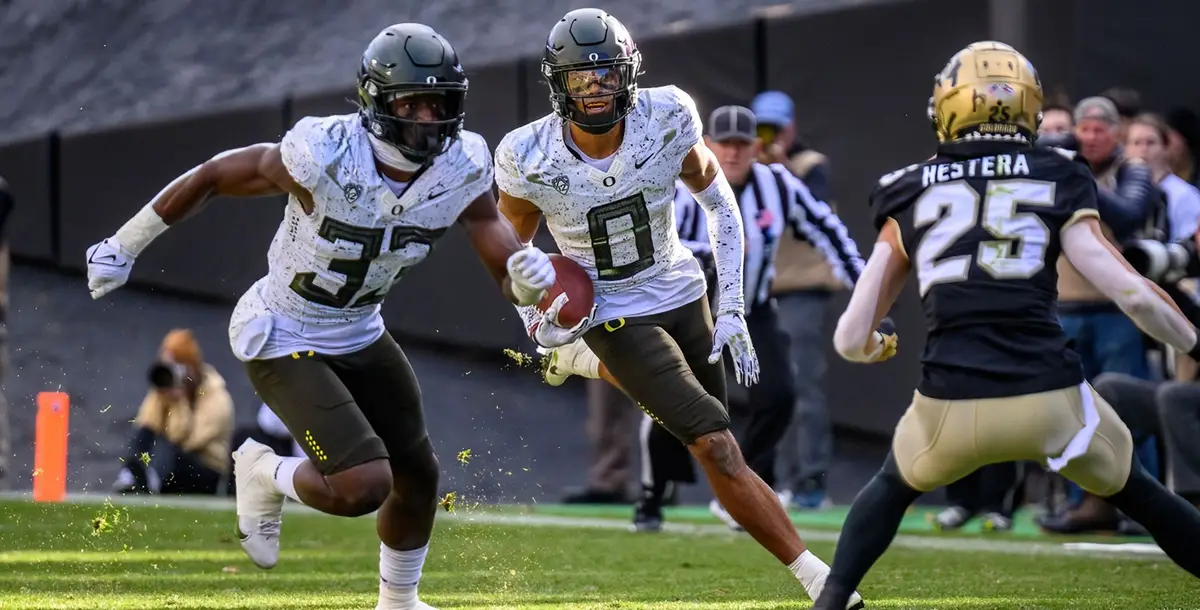With what feels like an imminent media deal coming, it seems there may be a plan to keep this historic conference together. Here is what George Kliavkoff’s plan for the Pac may look like.
Phase 1: Survive
This is where the conference finds itself now. The Pac-12 needs to sign a media deal that is equal to or ideally ahead of the Big 12’s deal. This is important for two reasons. First, it will keep the conference together for the rest of the decade, preventing teams like Colorado and Arizona from looking at the Big 12 as a better home.
Second, this what is actually fair for the Pac. The Big 12 was demolished when Oklahoma and Texas opted to leave for the SEC. Those were the two premier brands in the Big 12, and it wasn’t even close. Some estimates placed those two teams as generating up to or more than 50% of the Big 12’s total media value. There is a reason Texas has the Longhorn Network; they have the fan base to generate enough buzz to fuel their own network.
Both USC and UCLA sit in an important media market, and it absolutely hurts the Pac that they have left the conference. They are significant west coast brands but they are not as dominant over their conference as Oklahoma and Texas were for the Big 12. Part of the rumored reasons for why USC left was they believed they should receive a bigger cut of Pac-12 revenue because of what they bring to the Pac due to their media market location. Since they didn’t get what they wanted, they opted to stab the conference in the back and bolt to the B1G, taking UCLA with them.
Oregon and Washington are both valuable programs and have both seen far better on-field success in the past decade than either LA school. Oregon and Washington hold far more value than any team in the remaining Big 12, and the two Northwestern schools will have to prove they can hold the conference up. Oregon is certainly up to the task as the program is headed in the right direction under Dan Lanning.
If the conference adds San Diego State and SMU, it will beat out the Big 12 in terms of media market population — and do so with two fewer teams.

Photo By Craig Strobeck
Phase 2: Reclaim LA
Phase 2 is going to take a while before we can see it come to fruition, but when the B1G media rights expire in 2030 it is vital for the long-term survival of the Pac that the conference is able to get back into LA. The primary target will be UCLA as it is already becoming abundantly clear that both LA schools are going to have to travel a lot in the coming years. UCLA’s athletics are already struggling financially and that much travel, even with more money, isn’t going to be easy — especially as they will have to pay Cal some of that money in order to help support Cal’s athletics.
UCLA may find it easier and cheaper to rejoin the Pac come 2030. This will be even more likely if UCLA doesn’t see any real on-field success in the B1G. For UCLA, they could see a lot more stress put on their players and they might not necessarily net any more money. Keep in mind that it’s not just UCLA football that is traveling more, but all their sports. Whether the extra money from the B1G will cover the costs and allow for UCLA to comfortably profit is yet to bee seen.
If UCLA leaves the B1G in 2030 to return to the Pac, it may force USC to reconsider their B1G membership. Then again, maybe it may be worth leaving them to rot in the travel nightmare that will be their B1G membership. If USC returns to the Pac at that time, great. If not, that will just result in the Pac looking elsewhere to add another member.
Phase 3: Expansion at the Big 12’s Expense
Many fans called for this a couple years ago when the Big 12 was staring into the abyss. It didn’t happen, in part because many Pac schools didn’t want to look to expand — USC being one of them. Also Kliavkoff had only officially been on the job for maybe a month when the Texas-Oklahoma to the SEC news broke. It was just not the right time for the Pac-12 to look at expanding, even though they absolutely should have considered it.
But come 2030 if everything goes according to plan through Phases 1 and 2, it will be time for the Pac-12 to take a bite out of the Big 12 — but selectively. Let’s assume the Pac is composed of the current 10 but with the addition of SDSU and SMU, and the Pac has re-added UCLA and USC. The most likely targets in the Big 12 would be Oklahoma State, Texas Tech and Kansas because they are really the best fit in terms of brands, and they would help reduce some travel time for SMU.

Photo By Eugene Johnson
The reality is that, of those three, Kansas is probably the best fit because they are the only one of the three is that is an AAU School at this time. That would check the academic box. Kansas also may not be a football powerhouse, but they are a basketball blue blood, so they would be worth adding to the conference.
Which leaves Oklahoma State or Texas Tech to be the second addition. Oklahoma State may be the better choice from an athletic program standpoint since they are more consistently ranked than Texas Tech, but Texas Tech would give the Pac another foothold in the Texas recruiting market. It wouldn’t be a major one, though, as it isn’t the University of Texas or Texas A&M. At this point it really feels like the conference should pick whichever one is the better cultural fit.
If USC was not re-added during the re-conquest of LA, then it would also be prudent for the Pac to go after the team of the three mentioned above that was not originally invited.
This would result in the creation of the Pac-16, and the Pac would be a valuable power conference on the west coast. Maybe not quite at the same scale as the B1G or SEC, but if Oregon can manage to bring home a National Championship before 2030 in football, it would go a long way in boosting the Pac’s image. That way, the next media contract could be a really good deal for all involved and a fantastic reward to sticking with the conference through a difficult time. There is an opportunity for the Pac to be the dominant west coast conference, but it will all come down to timing and some luck to bring it all together.
David Marsh
Portland, Oregon
Top Photo By: Craig Strobeck

Natalie Liebhaber, the FishDuck.com Volunteer Editor for this article, works in the medical technology industry in SLC, Utah.
Related Articles:
Oregon Enters Playoffs Better Off Than Last Year
Will The Coaching Carousel Kill Oregon's CFP Chances?
The Playoff Formula Hasn't Changed
Oregon Aims to Bury Dawgs, Punch Playoff Ticket in Rivalry Clash
Huskies Are the New Beavers, Stay In Your Lane Kiffin, and the Civil Apple Cup War
Oregon Football: The X-Factor Vs. Washington

David Marsh is a high school social studies teacher in Portland, Oregon. As a teacher he is known for telling puns to his students who sometimes laugh out of sympathy, and being both eccentric about history and the Ducks.
David graduated from the University of Oregon in 2012 with Majors in: Medieval Studies, Religious Studies, and Geography. David began following Ducks Football after being in a car accident in 2012; finding football something new and exciting to learn about during this difficult time in his life. Now, he cannot see life without Oregon football.

